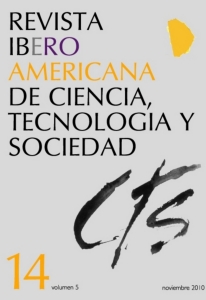The Idea of Malfunction in Technical Artifacts
DOI:
https://doi.org/10.52712/issn.1850-0013-842Keywords:
malfunction, technical artifact, normativityAbstract
This article attempts to make some clarifications about the problem of normativity in the field of technical artifacts. For this purpose two strategies are presented. The first one contrasts technical and non-artificial objects through a comparison between artifactual and biological functions. The second strategy is to characterize the idea of ‘malfunction’ and to show its scope and peculiarities, to finally reconstruct conditions required for a legitimate attribution of artifactual malfunction.
Downloads
References
DIPERT, R. (1993): Artifacts, Arts Works, and Agency, Filadelfia, Temple University Press.
DIPERT, R. (1995): “Some issues in the Theory of Artifacts: Defining ‘Artifact’ and Related Notions”, The Monist, vol. 78, pp. 119-35.
FRANSSEN, M. (2006): “The normativity of artefacts”, Studies in History and Philosophy of Science, vol. 37, pp. 42-57.
HEIDEGGER, M. (2007): Los conceptos fundamentales de la metafísica, Madrid, Alianza.
HUGHES, J. (2009): “An artifact is to use: an introduction to instrumental functions”, Synthese, vol. 168.
LAWLER, D. (2008): “Una aproximación exploratoria a nuestro lenguaje normativo sobre los artefactos técnicos”, Revista Iberoamericana de la Ciencia, la Tecnología y la Sociedad -CTS, vol. 4, nº 10, pp. 19-31.
LONGY, F. (2007): “Function and Probability: The Making of Artefacts”, Techné, vol. 10, pp. 71-86.
PARENTE, D. (2008): “La concepción heideggeriana del artefacto en Grundbegriffe der Methaphysik”, Signos filosóficos, México, vol. 20, 98-123.
PRESTON, B. (1998): “Why is a wing like a spoon? A pluralist theory of function”, The Journal of Philosophy, vol. 95, pp. 215-254.
SCHEELE, M. (2006): “Function and use of technical artefacts: social conditions of function ascription”, Studies in the History and Philosophy of Science, vol. 37, pp. 23-36.
SEARLE, J. (1995): The construction of social reality, Nueva York, Free Press.
Downloads
Published
How to Cite
Issue
Section
License
Copyright (c) 2025 CC Attribution 4.0

This work is licensed under a Creative Commons Attribution 4.0 International License.
All CTS's issues and academic articles are under a CC-BY license.
Since 2007, CTS has provided open and free access to all its contents, including the complete archive of its quarterly edition and the different products presented in its electronic platform. This decision is based on the belief that offering free access to published materials helps to build a greater and better exchange of knowledge.
In turn, for the quarterly edition, CTS allows institutional and thematic repositories, as well as personal web pages, to self-archive articles in their post-print or editorial version, immediately after the publication of the final version of each issue and under the condition that a link to the original source will be incorporated into the self-archive.











